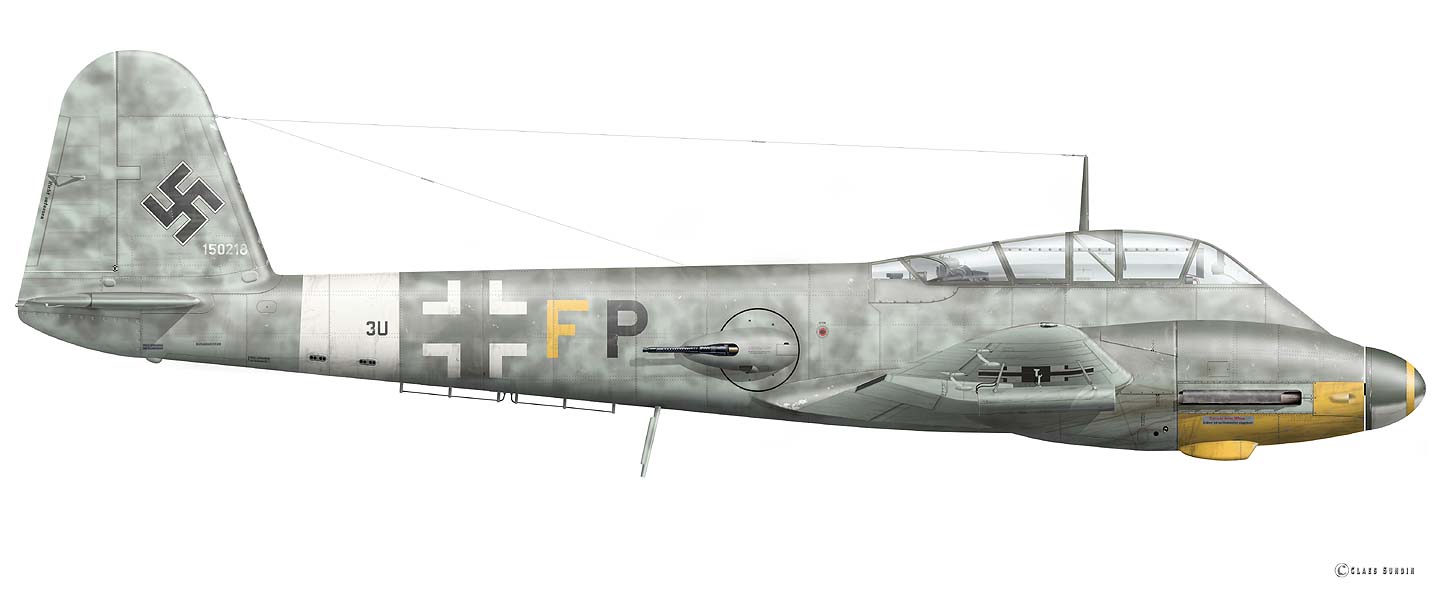


|
Zerstörergeschwader 26 "Horst Wessel" was from mid 1943 fought against the 8th and 15th USAAF in the Reichferteidigung with some success until US long-range fighters made further operations too costly. finally ZG 26 was disbanded in September 1944 and re-designated a Bf 109-unit as JG 6. On 10 October 1943, ZG 26 made its first notable interception of an American 4-engine bombers. On this date, Eighth Air Force planners decided to keep the pressure of the Luftwaffe fighter force. Jagssivision dispatch 350 fighters in at least 13 Jagd and Zerstörergruppen to defend the day's target, the city of Münster. In total 32B-17 and three P-47 Thunderbolt was claimed by the combined Luftwaffe force, bombers were shot down, for the cost was 25 German fighters and 12 airmen killed. Nine were Bf 110s and Me 410s. In 1944 the long-range USAAF fighter escorts began to appear. During the Big Wek In February, USAAF commenced a systematic series of operations against the Luftwaffe's combat units and supporting industry. And on 11 February 1944. ZG 26, which were hard pressed, were effectively protected by Bf 109s. Nevertheless the II./ZG 26, which was the only Me 410-equipped Gruppe to engaged the enemy force their pilot regarded it as a "suicide command." As the Big Week began on 20 February, German fighter production was targeted. Specifically, those factories producing the Bf 109, Fw 190, Bf 110, Me 410 and Ju 88. The first day proved costly for the German fighter defences. The northern forces of the operation lost only six bombers, and southern force 15 and four damaged. The defending German units lost 44 aircrew killed, 29 wounded and 74 fighters destroyed with 29 damaged. The Zerstörergeschwader suffered severe losses. III./ZG 26 lost 10 killed and seven wounded along with 10 Bf 110s destroyed and three damaged when it was engaged by P-47 while forming up in On 22 February, 799 bombers were dispatched by the 8th USAAF. The 2nd and 3rd Bombardment Divisions were however recalled, leaving only 99 bombers from the 1st Bombardment Division to carry out the mission in scattered over Germany. US escorts claimed 59 destroyed seven damaged and 26 probable victories against German fighters for the loss of 11 and one damaged. German losses were 48 single-engine fighters and 16 Zerstörer. III./ZG 26 was the hardest hit, losing four killed, three wounded and eight Bf 110s. The II./ZG 26 lost one Me 410. Its pilot was no other then the Gruppenkommandore, Hptm. Eduard Tratt, the most successful Zerstörer pilot of the war with 38 Abschüsse under his belt. From October 1943 to February 1944 the II./ZG 26 lost no less than 36 Me 410 in combat, close to its full complement of fighters. Note the pair of WGR
rocket tubes under each wing. |
|
|
|
|
|
|